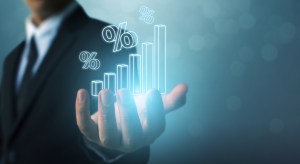Understanding GDP: What It Means for Your Business Growth
In the ever-changing landscape of economic conditions, understanding key economic indicators like GDP, inflation, and unemployment is crucial for businesses. These metrics not only reflect the health of the economy but also influence strategic decisions that can propel business growth. This article will delve into what GDP means, how it relates to inflation and unemployment, and its implications for your business.
What is GDP?
Gross Domestic Product (GDP) represents the total dollar value of all goods and services produced over a specific time period within a country’s borders. It serves as a comprehensive scorecard of a country’s economic health. An increasing GDP typically indicates a growing economy where businesses are thriving, while a declining GDP can signify economic trouble ahead. Understanding fluctuations in GDP can help businesses anticipate market trends and adjust their strategies accordingly.

The Role of Inflation
Inflation measures how much prices for goods and services rise over time. While moderate inflation is often seen as a sign of a growing economy, high levels can erode purchasing power and affect consumer spending habits. For businesses, understanding inflation is essential because it influences costs of production, pricing strategies, and ultimately profit margins. Companies must adapt to changing prices to maintain competitive advantages.
Unemployment Rates: A Key Indicator
Unemployment rates indicate the percentage of the labor force that is jobless but actively seeking employment. High unemployment rates can lead to reduced consumer spending as more people face financial insecurity; this directly impacts sales for many businesses. Conversely, low unemployment often correlates with increased consumer spending power which can boost demand for products or services offered by companies.
Interconnections Between GDP, Inflation, and Unemployment
These three indicators are interconnected through complex relationships often described by economic theories like Okun’s Law or Phillips Curve. For instance, an increase in GDP might lead to lower unemployment rates as companies expand their operations to meet rising demand; however, this could also result in higher inflation if supply cannot keep pace with demand. Businesses need to remain vigilant about these dynamics as they influence operational planning.
Impact on Business Strategy
Understanding how these indicators interact allows businesses to make informed decisions regarding expansion plans, product pricing adjustments or cost-cutting measures during downturns in any one area. Firms may choose different strategies based on current economic conditions—for example investing heavily during periods of growth signaled by rising GDP while exercising caution when inflation spikes or unemployment rises.
In conclusion, grasping the implications of economic indicators such as GDP, inflation rates, and unemployment statistics is crucial for business success. By staying informed about these metrics and their interrelations—businesses can better navigate challenges while capitalizing on opportunities that align with broader economic trends.
This text was generated using a large language model, and select text has been reviewed and moderated for purposes such as readability.











